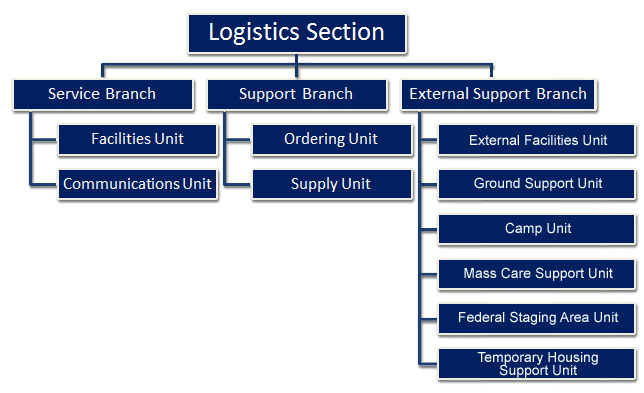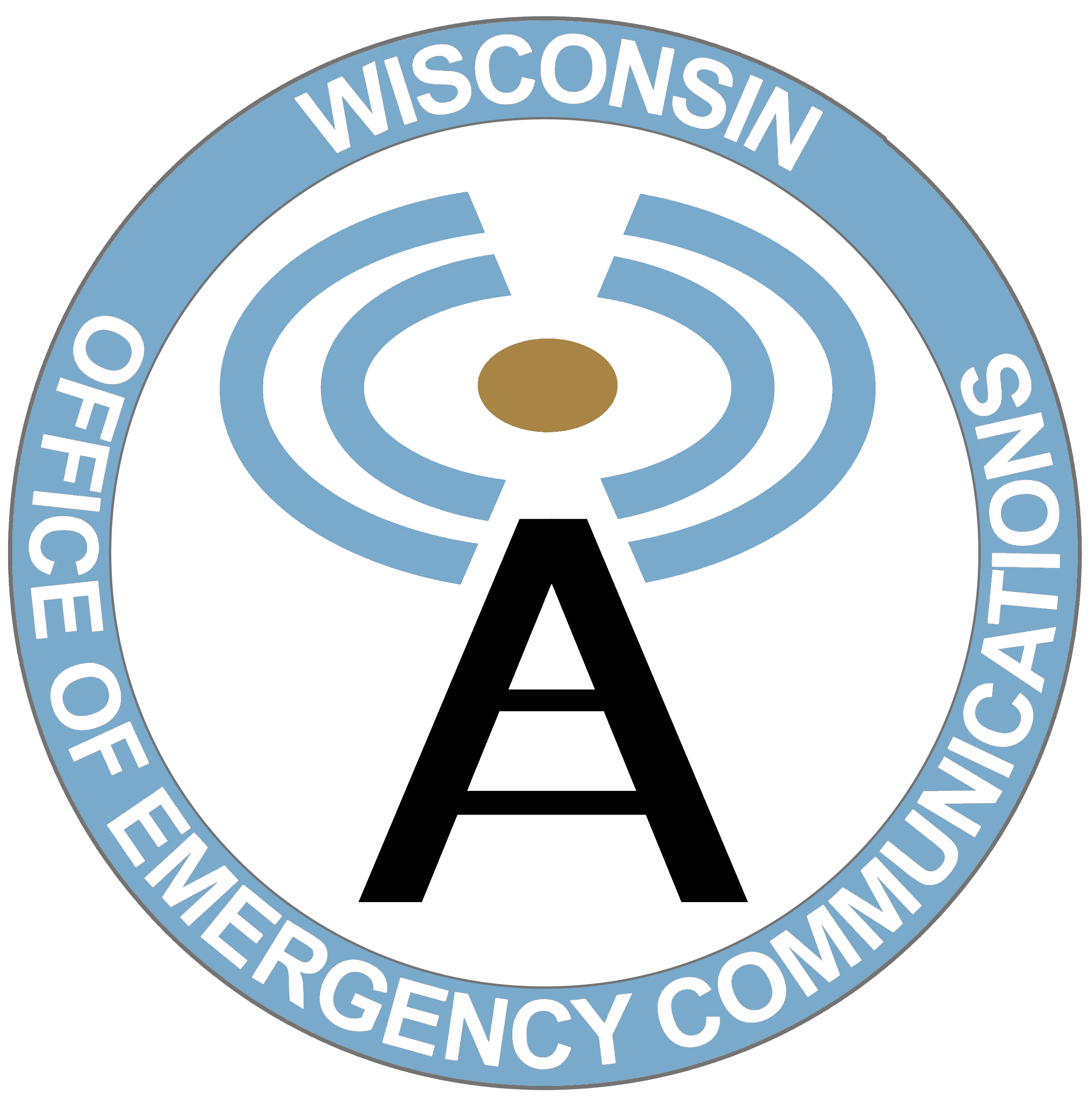What is the Communications Unit?
The Communications Unit (COMU) is a key supportive organization within the Incident Command System (ICS) which establishes a standardized approach to the command, control and coordination of on-scene incident management. It currently falls under the Service Branch in the Logistics Section of the National Incident Management System (NIMS). Logistics Section personnel provide services and support for effective and efficient incident management.

The COMU focuses on the communications portion of emergency response, such as assisting with the development of communications plans to be used by emergency personnel during an incident or event. The Communications Unit Leader (COML) is the head of a COMU. Other positions within the COMU include Communications Technician (COMT), Incident Communications Center Manager (INCM), Incident Tactical Dispatcher (INTD), and Technical Specialist (THSP).
Wisconsin follows the U.S. Department of Homeland Security (DHS)/Cybersecurity and Infrastructure Security Agency (CISA), Emergency Communications Division (ECD) and Federal Emergency Management Agency (FEMA) national All-Hazards training curriculum for positions requiring task book training within the Communications Unit.
Communications Unit Recognitions Program
The Wisconsin Communications Unit Recognitions Program Wisconsin was first created in 2013 through a Technical Assistance offering from the U.S. DHS/CISA/ECD that established standard operating guidelines for recognizing individuals who have completed their All-Hazards Position Task Book.
Communications Qualification Review Board
In February 2017, the IC updated the mission and responsibilities of its Land Mobile Radio (LMR) Subcommittee by-laws to include a recognition process for communications positions within the ICS structure. The Communications Unit Workgroup (COMU WG) was created to serve as the body of communications experts to ensure the professional credibility and maintain the highest standards for the various communications unit training and recognition processes.
In 2022, the IC voted to remove the COMU WG as a workgroup of the LMR Subcommittee under the IC; the IC approved the Office of Emergency Communications (OEC) to create a new peer review committee under the supervision of the Statewide Interoperability Coordinator (SWIC) . This new group is called the Communications Qualification Review Board (CQRB).
The CQRB is composed of the following members. Click here for the current roster.
- Statewide Interoperability Coordinator (SWIC) or DMA/OEC designee
- 6-8 subject matter experts (SMEs) who possess a high level of operational and/or training experience in the COMU field, are recognized as a COMT or COML, and are approved by the Interoperability Council
- Representative(s) from Wisconsin Emergency Management (WEM) with responsibilities in the areas of training and emergency communications
- Region 5 Coordinator for US DHS/CISA/ECDOEC support staff
The SWIC or DMA/OEC designee will serve as the permanent chair of the CQRB .
COMU Recognition Process
1 ) The steps listed below are required to obtain entry-level recognition within the State of Wisconsin for position-specific roles within the Communications Unit.
- Pre-requisite trainings are available online through FEMA and can be found on the National Incident Management System (NIMS) page.
- Some pre-requisite courses are offered by WEM. A complete list of training events is available under the Schedule tab in the WEM Training Portal.
Candidates should create an account in the WEM Training Portal. All-hazards specific training certificates of completion can then be uploaded and saved to your account.
2 ) Candidates must successfully complete all-hazards position-specific training.
- The WEM Training Portal includes a schedule of upcoming training events.
- Starting January 1, 2020, WEM will be able to send email updates for training opportunities directly to all-hazards personnel that are interested in acquiring recognition in Wisconsin. To receive these email notifications, you must sign up for WEB EOC updates. Sign up for WEB EOC by contacting your local County Emergency Management team.
3 ) Following training, candidates must complete the applicable Position Task Book (PTB) and other requirements listed in the SOG
- COMU positions have a corresponding PTB that is distributed following a position-specific training.
- PTBs must be started within 18 months of the all-hazards position specific training course.
- PTBs must be initiated by the appropriate official from the sponsoring agency.
- A trainee has three (3) years to complete and submit their PTB and supporting.
4 ) Candidates must submit the request for recognition along with all required documentation described in the SOG to the Office of Emergency Communications (OEC) for review by the CQRB.
5 ) The CQRB will review the candidate’s documentation to determine eligibility for recognition in accordance with the SOG. The candidate may be asked to provide additional information or documentation if necessary.
6 ) If eligibility is confirmed, the candidate will be issued a certificate reflecting state recognition status for the applicable COMU position.
7 ) After initial recognition is obtained, the candidate must comply with the provisions contained in the SOG to maintain and renew the recognition status for the desired Communications Unit positions to ensure active participation.
Position Task Books (PTBs)
Position Task Books, or PTBs, are used to evaluate a position-specific trainee (COML, COMT, INTD, etc.) against written guidelines provided in each PTB. Most COMU positions have a corresponding PTB that is distributed following position-specific training. It is required that tasks be completed during a minimum of 2 different exercises, events, or incidents and with signatures from at least 2 different evaluators, unless authorization is obtained from the CQRB.
Exercises and planned events require prior review and approval by the Statewide Interoperability Coordinator (SWIC), or authorized designee. Please use this form: DMA-2101 COMU Exercise Event Review
There may be PTB sign-off opportunities at the following previously approved events and exercises:
Please click the links below for the latest versions of U.S. DHS PTBs
PTB Evaluators
Effective January 1, 2021, the person signing off on the tasks performed in PTBs must be an evaluator or final evaluator as authorized by the CQRB and be present at the event to personally witness the trainee performing the tasks.
Evaluator / Final Evaluator – An evaluator is an individual that is responsible for evaluating a Trainee completing one or more tasks within a PTB. The evaluator must be qualified, proficient, and recognized in the position they are evaluating or be recognized in a position that supervises that position in the ICS. The evaluator who signed the verification statement at the front of the PTB after all tasks have been completed is known as the final evaluator.
Please click the link below for a current list of recognized COMU personnel in the state of Wisconsin.
Communications Assets and Survey Mapping (CASM)
The Communication Assets Survey and Mapping Tool (CASM), offered by the Cybersecurity and Infrastructure Security Agency (CISA) and Interoperable Communications Technical Assistance Program (ICTAP), is the primary resource nationwide for the emergency communications community to inventory and share agency, asset, and Communications Unit information, for the purpose of planning public safety communications operability and interoperability.
In late 2019, the Department of Military Affairs (DMA) Office of Emergency Communications (OEC), in conjunction with the Communications Unit Workgroup (COMU WG), started to develop a CASM Account User Policy for the State of Wisconsin. The purpose of the policy is to define administration, account creation, rules for data entry, and maintenance of information related to CASM for the State of Wisconsin. In July 2020, the Wisconsin CASM Account User Policy 2020 was approved by the Interoperability Council.
Included in the policy:
- CASM access application process. You must be a registered user to access CASM.
- Guidelines for users entering asset and data information into CASM
